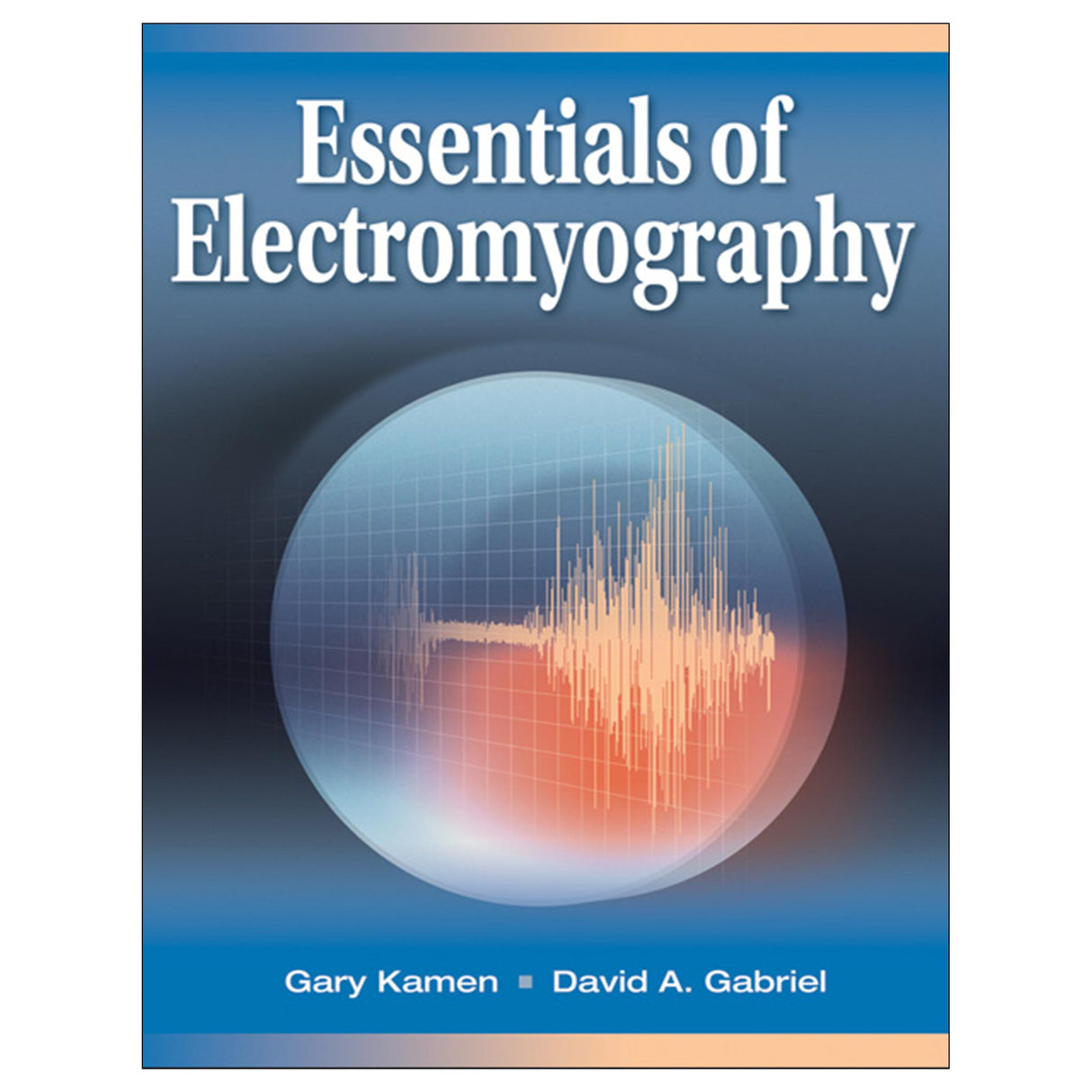Essentials of Electromoyograhy
Author: Gary Kamen, David A. Gabriel
$49.00 CAD
The interest in and use of electromyography (EMG) have grown significantly in recent years. Researchers have found numerous clinical and research uses for EMG, including biofeedback, gait analysis, and clinical diagnosis for neuromuscular disorders. Yet, until now, few sources have been available to help novices understand the characteristics of the instrumentation, signal analysis techniques, and appropriate EMG applications.
Essentials of Electromyography provides the perfect starting point for those who plan to use EMG because it aids in the comprehension of issues such as handling noise contamination to the area, slope, and variability of the EMG signal. The text is also a solid reference for practitioners who use EMG, including exercise scientists, physical therapists, occupational therapists, and motor development specialists.
The book contains six detailed chapters discussing the anatomy and physiology of muscle, bioelectricity, EMG tools, signal processing, force–fatigue relations, and gait. Through Essentials of Electromyography, readers will
-learn both fundamental and advanced concepts regarding the principles of using EMG, including the use and abuse of electrical recordings of muscle potentials;
-discover the physiological basis of EMG signals, which is explained at an introductory level; and
-explore relevant topics such as electrode configuration, advanced signal processing theory, and locations for extracting EMG information.
The text provides a solid review of the relationship between human anatomy and EMG as well as how EMG is applied to clinical areas. It showcases over 160 figures and many qualitative explanations to communicate the principles of EMG, the biophysical basis of EMG, and the appropriate applications of EMG. It also contains appendixes for readers with a deeper understanding of EMG and stronger backgrounds in math; those readers will have the opportunity to work through more detailed EMG calculations. The book is heavily referenced and illustrated with diagrams showing electrical circuits and the progression of electrical impulses.
Essentials of Electromyography--which is also available as an e-book—will help readers learn how to apply EMG for biofeedback, back pain, sport activities, and other uses. The text pulls together information scattered in books and articles among the numerous disciplines that use EMG as a tool. With its clear presentation of the concepts and applications of EMG, Essentials of Electromyography will prove to be a valuable text for practitioners and students alike.
Audience
Reference for exercise scientists in motor control and biomechanics, biomedical engineers, physical therapists, occupational therapists, athletic trainers, motor development specialists, and researchers. Text for students in courses using EMG technology.
Preface
Acknowledgments
Acronyms and Symbols
Chapter 1. Anatomy and Physiology of Muscle Bioelectric Signals
Anatomical Features of Muscle
Physiology of the Muscle Fiber
Motor Unit Features
Techniques for Modulating Muscular Force
Other Physiological Influences on the Electromyogram
For Further Reading
Chapter 2. Bioelectricity
Forces in Electricity
Essentials of Electric Circuits
Essentials of Alternating Current
For Further Reading
Chapter 3. EMG Instrumentation
Electrodes
Electrode Configuration
Amplifier Characteristics
Grounding
Computer Interfacing
For Further Reading
Chapter 4. EMG Signal Processing
Amplitude
Cross-Correlation Function
Frequency
Data Window Length
Noise Contamination
Basic Concepts of Digital Filtering
For Further Reading
Chapter 5. EMG–Force and EMG–Fatigue Relationships
Relationships Between Muscular Force and EMG
EMG Analysis During Fatiguing Contractions
Advanced EMG Issues During Fatiguing Contractions
For Further Reading
Chapter 6. Other EMG Applications
EMG and Gait
EMG Activation Timing
Evoked Potentials
Ballistic Movements
For Further Reading
Appendix 2.1 Calculation of Electric Fields
Appendix 2.2 Calculating the Electric Potential at a Point
Appendix 2.3 Electric Circuits
Appendix 2.4 Charging a Capacitor Through a Resistor
Appendix 2.5 The Muscle Fiber as an RC Circuit
Appendix 3.1 Muscle–Tendon End Effects
Appendix 4.1 EMG Area and Slope Measurement
Appendix 4.2 Cross-Correlation Function
Appendix 4.3 Calculating Fourier Coefficients
Glossary
References
Index
About the Authors
Image bank. Features most of the figures and tables from the text, sorted by chapter. The images can be used in developing a customized presentation based on specific course requirements. A blank PowerPoint template is also provided, along with easy-to-follow instructions for quickly creating a presentation.








